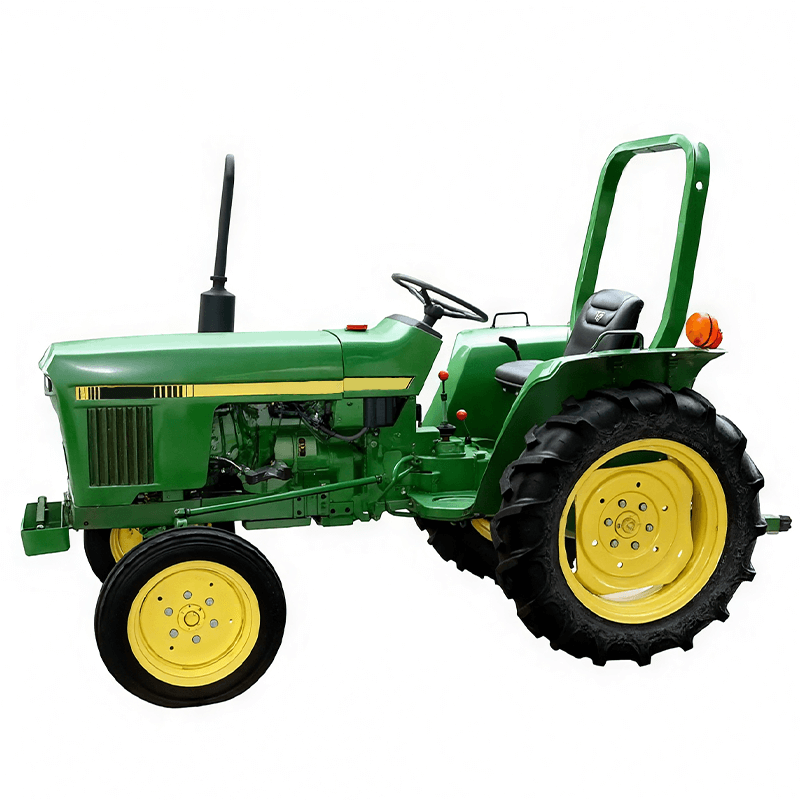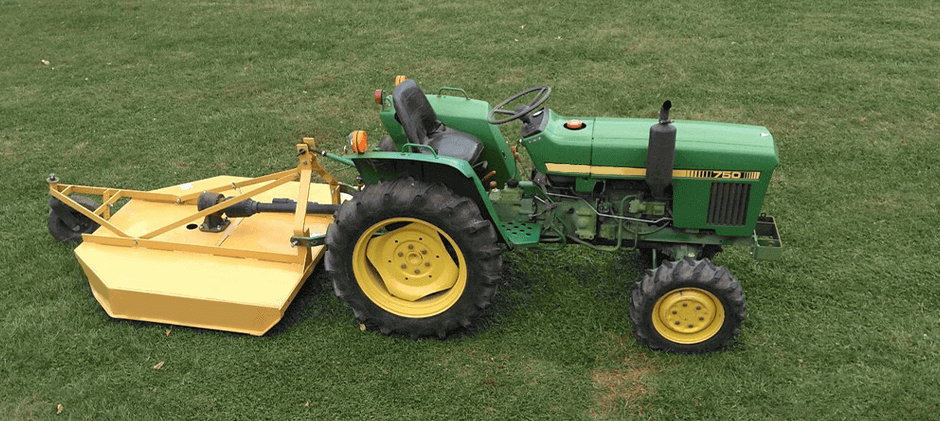The John Deere 750 tractor is a classic compact workhorse known for its reliability, simple mechanical design, and versatility. Beloved by farmers and property owners, it remains easy to maintain and highly functional decades later. In this guide, we’ll showcase the John Deere 750’s specifications, including its strengths and weaknesses, parts recommendations, and operating and maintenance tips. Whether you’re looking to troubleshoot a problem or planning a complete restoration, this is the place to start.
About John Deere 750 Tractor

Overview of the John Deere 750
- Produced from 1981 to 1988 as part of a John Deere–Yanmar partnership.
- Additionally, it is a compact utility tractor designed for power and maneuverability.
- Moreover, it was built in Japan with a focus on reliability and efficiency.
- Therefore, it is ideal for tasks where larger tractors are too cumbersome.
Key Specifications
- Powered by a 1.0L liquid-cooled Yanmar 3-cylinder diesel engine.
- It delivers about 20 gross horsepower and, consequently, 18.5 PTO horsepower.
- Offered in both 2WD and 4WD configurations.
- Features an 8-forward, 2-reverse sliding gear transmission.
- It is equipped with an open-center hydraulic system, featuring a 3.75-gallon capacity.
- In addition, it features a standard Category I rear hitch for versatile attachments.
John Deere 750 Tractor Specs
Engine
| Engine Detail | Yanmar 3T80 diesel 3-cylinder liquid-cooled inline |
|---|---|
| Displacement | 78.2 ci 1.3 L |
| Bore/Stroke | 3.15×3.35 inches 80 x 85 mm |
| Power (gross) | 20 hp 14.9 kW |
| Air cleaner | dry |
| Pre-heating | therostart |
| Compression | 22.5:1 |
| Rated RPM | 2400 |
| Starter volts | 12 |
| Oil capacity | 4.0 qts 3.8 L |
| Coolant capacity | 4.5 qts 4.3 L |
Transmission
| Transmission | Four gears, plus reverse, in two ranges. |
|---|---|
| Type | gear |
| Gears | 8 forward and 2 reverse |
| Clutch | 200mm dry disc |
| Oil capacity | 15 qts 14.2 L |
Dimensions
| John Deere 750 Tires | |
|---|---|
| Standard tires (ag) | Front: 4.00-15. Rear: 9.5-24
Front: 5-14. Rear: 9.5-24 |
| Lawn/turf front | 25/8.5-14 |
| Lawn/turf rear | 13.6-16 |
Attachments
| Attachment overview |
|---|
| 60″ mid-mount mower deck |
| Snowblower |
| Blade |
| John Deere 67 loader |
| John Deere 70 loader |
| Backhoe |
| Advertised attachments included the model 448 tiller and a 54-inch rotary mower. |
Source from: www.tractordata.com
John Deere 750 Pros and Cons
While the John Deere 750 is widely praised, anyone who owns one must have a practical understanding of its strengths and potential weaknesses. This knowledge is key to both operating the tractor effectively and troubleshooting issues when they arise.
Pros and Cons Snapshot:
| Pros (The Strengths) | Cons (The Weaknesses) |
|---|---|
| Excellent Fuel Economy: The Yanmar diesel engine is renowned for its fuel efficiency, which consequently allows you to work longer on its 6.2-gallon tank. | Manual Steering Standard: The base model came with manual steering, which can be physically demanding, especially during loader work. Power steering was an option, but it is less common. |
| Compact & Maneuverable: Thanks to its small footprint, it can easily work in tight spaces such as barns, wooded lots, and small pastures, where larger tractors, however, can’t go. | Potential Hydraulic Limitations: While adequate for most tasks, the hydraulic system can feel slow or weak when lifting very heavy implements. |
| Mechanical Simplicity: Because it has no complex computers or electronics, most repairs and maintenance tasks can, therefore, be performed with basic tools and a service manual. | OEM Parts Can Be Scarce: Consequently, as the tractor ages, finding specific original equipment manufacturer (OEM) John Deere parts at a local dealer can become a challenge. |
| Reliable Yanmar Engine: The engine is considered one of the most durable components of the tractor; moreover, it often lasts for thousands of hours with proper care. | PTO Safety Feature: The rear PTO is designed to disengage when the tractor is put in reverse. While a great safety feature, some operators find it inconvenient for certain tasks like back-blading. |
| Strong Resale Value: As a testament to their quality, John Deere tractor parts and machines hold their value exceptionally well on the used market. | Moderate Noise Levels: Compared to modern compact tractors, the 750 can be noticeably louder during operation. |
Recognizing these points helps you set the right expectations. The “Cons” are important factors to consider for maintenance and operation. The scarcity of some OEM parts, for example, highlights the importance of finding a reliable aftermarket tractor parts supplier.
John Deere 750 Tractor Related Parts
Operating and Maintenance Tips
The John Deere 750’s longevity comes from consistent maintenance and smart operation, while its simple design makes following a service schedule easy—your best defense against costly repairs.
Operating Best Practices
- Warm-Up: Let the diesel engine idle for a few minutes before heavy use to ensure proper oil circulation.
- Right Gear: To avoid lugging the engine, keep it in the optimal RPM range for better performance and fuel efficiency.
- Hydraulic Care: In order to operate smoothly and avoid strain on the system, be sure to stay within load limits.
- 4WD Use: Engage only when needed to avoid unnecessary drivetrain wear.
Essential Maintenance Schedule
- Before Every Use: Check oil and coolant, inspect for leaks, check tire pressure, and clean the radiator screen.
- Every 50 Hours: In addition, change the engine oil and filter, grease all fittings, and check or clean the air filter.
- Every 200–400 Hours: Be sure to replace the fuel filter, then change the transmission and hydraulic fluid, and finally inspect belts and hoses.
Following this routine helps prevent breakdowns, extends service life, and ensures peak performance, especially when paired with quality John Deere 750 tractor parts.
Conclusion
The John Deere 750 has earned its reputation as a tough, reliable, and incredibly useful compact tractor. Its timeless design and mechanical simplicity make it a machine that can be maintained for generations with the right care. Owning one is an investment in a piece of equipment that, when properly serviced, will simply refuse to quit. When the time does come for repairs, having a trusted partner for parts is essential. We specialize in providing a vast inventory of high-quality, affordable aftermarket tractor parts, helping you keep your workhorse running strong without compromising on quality.

